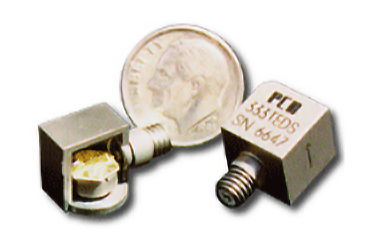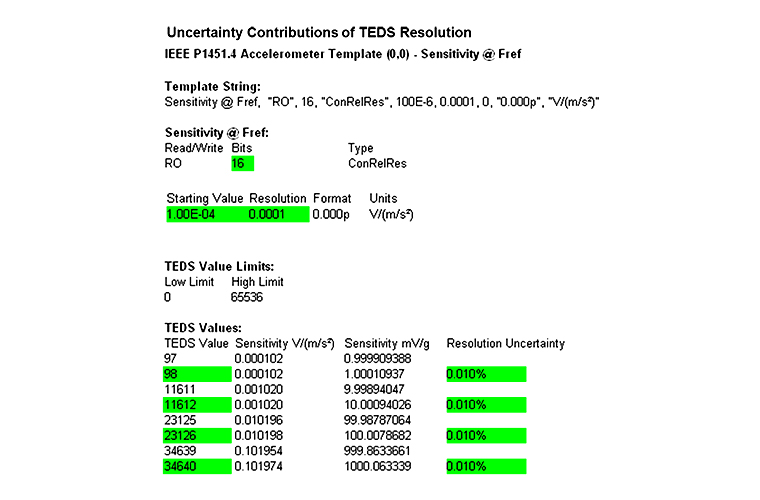Main Menu
- Home
- Product Finder
- Calibration Systems
- Calibration Services
- Digital Sensing
- Industrial Vibration Calibration
- Modal and Vibration Testing
- Non-Destructive Testing
- Sound & Vibration Rental Program
- Learn
- About Us
- Contact Us
 A vibration/structural test customer in Italy, brought us this perplexing observation. After entering and writing the sensitivity of a 100 mV/g into the TEDS (Transducer Electronic Data Sheet) storage memory of his accelerometer, his data acquisition software would then read and display the value as 0.010 V/(m/sec2). Glancing at the single zero to the right of the digit "1," he became concerned that the TEDS functionality was limiting the “resolution” of the recorded calibration value to within 10%? (=0.001/0.010 Which is the resolution of the display divided by the setting.) To understand the answer to this question and to experimentally examine the answer to the question, we can start by looking at the adjacent binary values for some common accelerometer sensitivities. Table 1 shows the binary TEDS value, Sensitivity in both metric and English units as well as the difference ratio of adjacent sensitivity values as a percentage.
A vibration/structural test customer in Italy, brought us this perplexing observation. After entering and writing the sensitivity of a 100 mV/g into the TEDS (Transducer Electronic Data Sheet) storage memory of his accelerometer, his data acquisition software would then read and display the value as 0.010 V/(m/sec2). Glancing at the single zero to the right of the digit "1," he became concerned that the TEDS functionality was limiting the “resolution” of the recorded calibration value to within 10%? (=0.001/0.010 Which is the resolution of the display divided by the setting.) To understand the answer to this question and to experimentally examine the answer to the question, we can start by looking at the adjacent binary values for some common accelerometer sensitivities. Table 1 shows the binary TEDS value, Sensitivity in both metric and English units as well as the difference ratio of adjacent sensitivity values as a percentage.

Table 1
From the table, we can quickly see that in fact, regardless of the choice of sensitivity, the resolution remains constant at 0.010%. The observation that this is constant provides a clue to the definition of the variable type “ConRelRes” in the template string. A quick check into the IEEE 1451.4 uncovers Table 7 entitled Data Types, which defines ConRelRes as Constant Relative Resolution by logarithmic mapping of an interval, explaining why we saw a constant in the relative resolution regardless of the magnitude of the sensitivity. Given that it was already mathematically defined, it had to work out this way by definition! It turns out that the 0.010 V/m/sec^2 value referred to in the first paragraph was simply a truncated display value of the actual calculated (and properly stored!) value of 0.01098 listed in Table 1.
So… it is comforting to know that the TEDS standard has been designed to be accurate and accommodating (also allowing for flexible user defined templates) from the start. The TEDS standard works across dynamic sensor vendors accommodating the internal memory capability and across data acquisition vendors which provide the need reverse bias to enable the process and decoding to read the values. For more information on the IEEE1451.4 standard or either TEDS reading or writing, please don’t hesitate to contact us. We are here to serve you.